A product adoption curve is vital for planning the go-to-market strategy for any type of product. The product adoption curve is especially relevant for developers proposing digital adoption solutions for a business.
Customers must take up the latest solutions when a developer releases a new product. Customers must take up the new solutions when a developer first releases a new product. In time, the product gains more traction in the marketplace and is adopted by increasing users. Eventually, the product reaches a stage of saturation, whereas many users as possible are using the product.
In some ways, the product adoption process is common sense. The product adoption curve classifies and explains every part of a product’s lifecycle with a visual representation of the process. Proposed by Everett Rogers in the early 2000s, the curve uses the normal distribution or “bell curve” to show the rate at which users take up a product through the technology adoption lifecycle.
Product adoption metrics represent the percentage of consumers who have adopted a particular product or service. The metrics are generally used to measure the success of an individual product, but they can also be used to compare products within a particular market.
This article will explain the basics of the product adoption curve. It will examine the five stages of the product adoption curve and explain how to drive innovation adoption at every step. With a particular focus on SaaS applications, the article will explain how to improve development and marketing strategies to enhance product adoption.
What is the Product Adoption Curve?
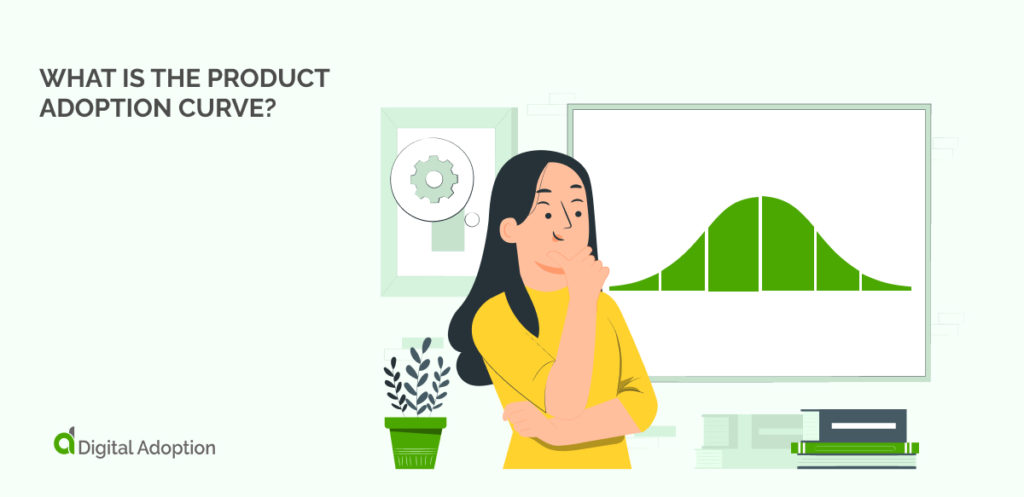
The concept of the product adoption curve was first proposed in the book Diffusion of Innovations by Everett Rogers.
Put simply. The product adoption curve is a graph that describes the adoption of an individual product, software platform, or technology service. Through five distinct stages, it shows how many people have adopted a particular product over time and helps companies estimate the long-term potential for growth. The curve starts slowly, with innovators testing out the new offering, before gaining momentum as more people become aware of the product, its features, and its benefits.
Developers need to consider every group in the product adoption process. None of the different stages is more important than another. Each type of user has their journey to the adoption of a new product or service, and each one contributes to the sustainable success of a new product.
Why Is The Product Adoption Curve Necessary?
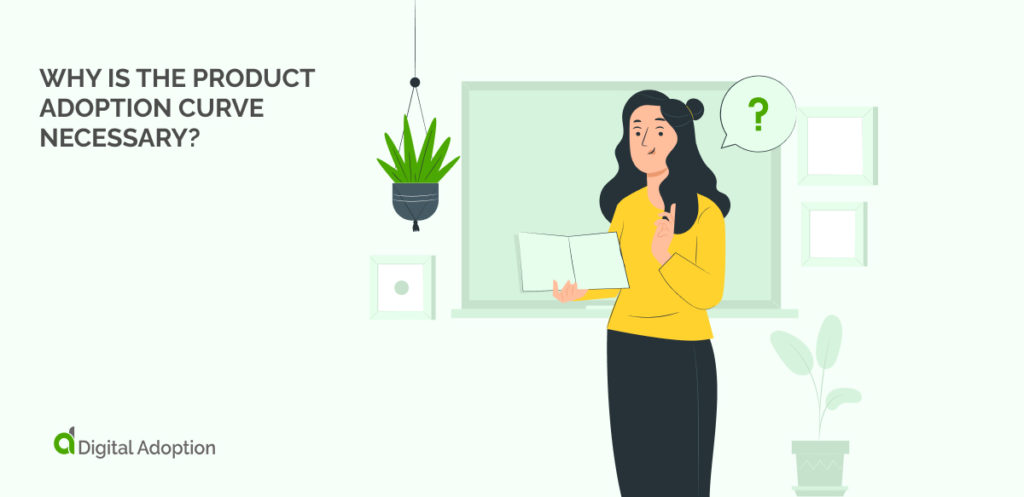
The product adoption curve helps businesses to critical decisions about their long-term strategy. In a 2022 Forbes article, Bernard Marr suggested that inadequate planning and complacency were two critical causes of business failure. When businesses understand how to target each product adoption curve stage appropriately, they have a much better capacity to plan for the entire product lifecycle attentively.
The product adoption curve reminds us that consumers adopt technologies at different speeds. Some new users will turn to a new product as soon as it is launched. But the reality is that potential customers will gradually become aware of a product before adopting it at a time appropriate for them.
As such, a product adoption curve is an essential tool for any business looking to be successful in the long run. Understanding how customers interact with and adopt a particular product helps companies forecast future demand and identify any potential problems or areas that need improvement to ensure maximum customer satisfaction. Knowing the adoption rate for a specific product also helps companies accurately predict its future success, direct their marketing campaigns appropriately, and forecast future demand.
And as a 2022 Gartner guide points out, “the path to retention begins with strong product adoption.”
The Five Steps Of Product Adoption

The curve is divided into five stages, each describing a different kind of customer behavior. The stages only represent some characteristics of other buyers. They simply provide an idea of what each group expects before they buy or subscribe to a service.
The adopter categories are innovators, early adopters, early majority, late majority, and laggards. This section will describe their different features.
- Innovators
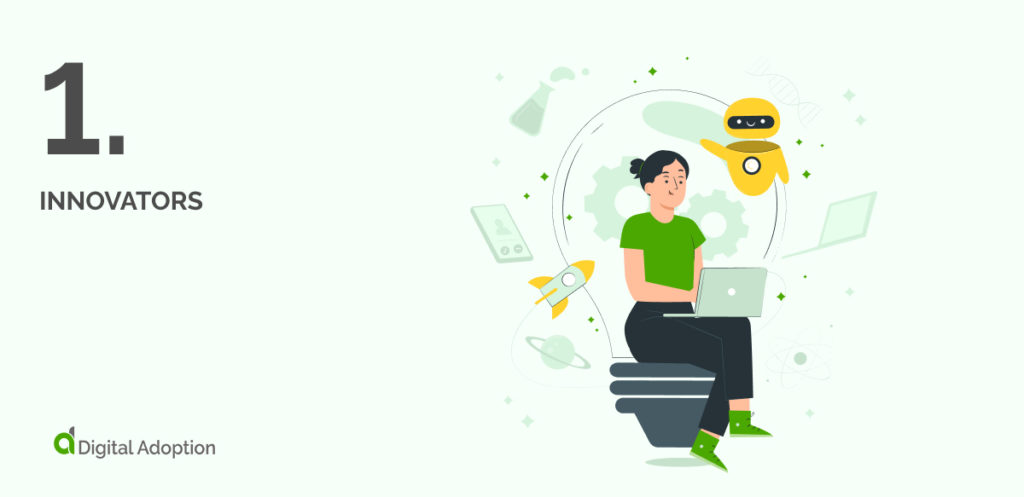
The innovators are the first consumers to recognize and share a product’s potential. This customer segment is usually willing to take risks, and their enthusiasm can be contagious. Companies should consider how they can appeal to these trailblazing customers by offering free trials or other incentives. Doing so can provide invaluable feedback that can help shape production and marketing in the medium term. Innovators will be dedicated beta testers with valuable opinions about the value of a product. They may, however, be a problematic audience when it comes to customer retention.
At the stage of innovator adoption, it might be difficult to tell whether customers are deriving unique benefits. A tool like Gartner’s technology hype cycle can support businesses in making critical decisions while enthusiasm is high.
- Early Adopters
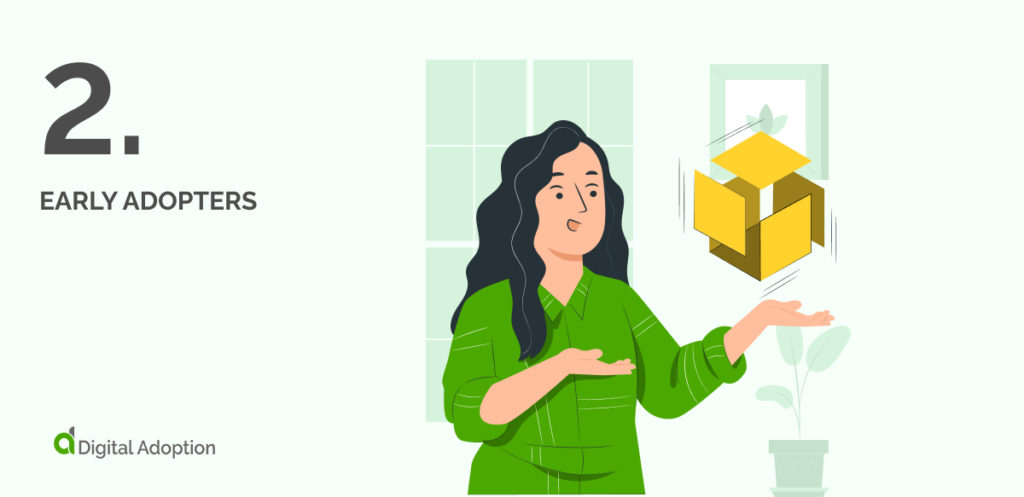
The early adopters are less daring than the innovators, but they often play a crucial role in making a product popular. Early adopters will need to see that a product has a loyal customer base of active users before they think about taking up the product themselves. That proof means they may be willing to pay premium prices to solve their long-standing problems. The early adopters won’t help with the product launch, but they offer valuable insights for companies looking to make changes or improvements.
- Early Majority Phase
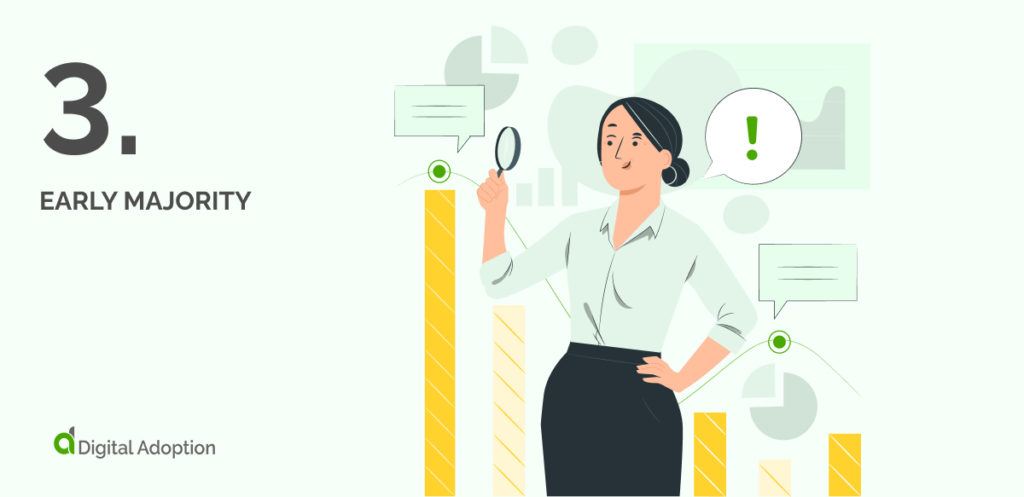
Hot on the heels of the innovators and early adopters, the early majority comprises those willing to try out a product but only after it has already been tested and proven. The users in the early majority phase must be confident that the product or service can address their specific pain points. Feedback from the early majority can provide insights into the experience of more focused users.
- Late Majority
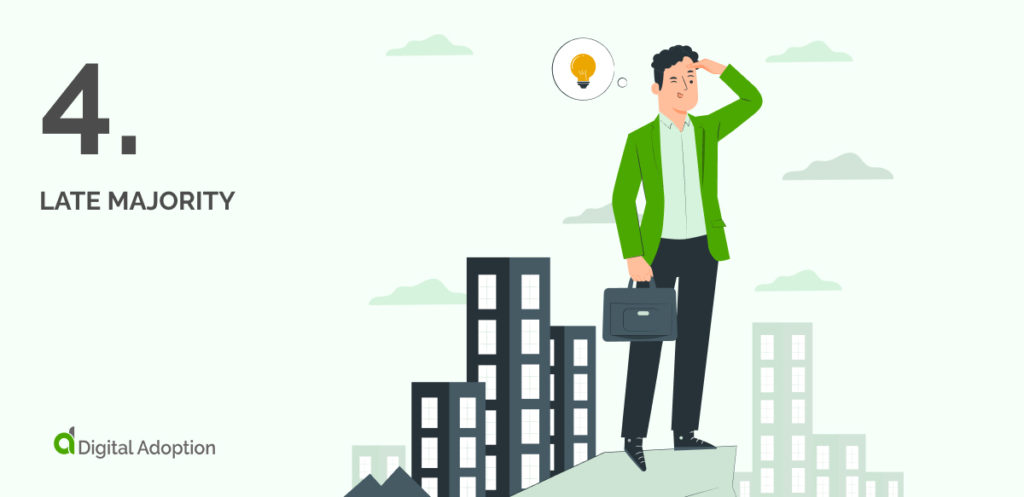
The late majority is the consumers who wait until others thoroughly prove a product before trying it themselves. They are far more likely to adopt the solution because they need it, not because they are interested in new approaches to old problems. This group is much more cautious and risk-averse, so they must see clear proof from early adopters and early majority groups. Companies should ensure their marketing emphasizes the product’s reliability and benefits to reach the late majority.
- Laggards

The laggards are the last group to adopt a product. They won’t drive the growth of the product, but they represent a big group of users. As such, any company that wants its product to keep a substantial market share must find a way to appeal to laggards. Laggards are typically very conservative and unlikely to try something new unless they have to. Winning over this group is more complex than any of the other groups.
The Five Drivers Of Adoption Innovation
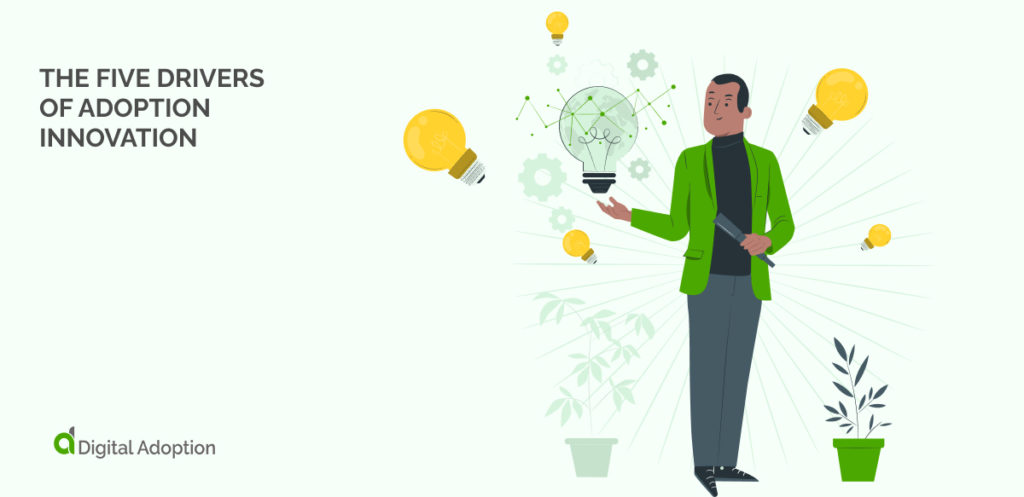
Everett Rogers suggested five key drivers underlying consumer adoption of innovation. Some seem like common sense, but they all need to be present to support new users at every stage of the product adoption curve.
Successful innovation adoption requires a holistic approach that considers these five drivers.
- Unique qualities of the product (product innovation)

Businesses release new products every year, but not all are helpful innovations. A product or service should stand out from existing solutions through its design or how it works. It needs to have a clear and distinct advantage over other similar products. This is the fundamental value proposition of a new product or service.
- How consumers decide to adopt innovations
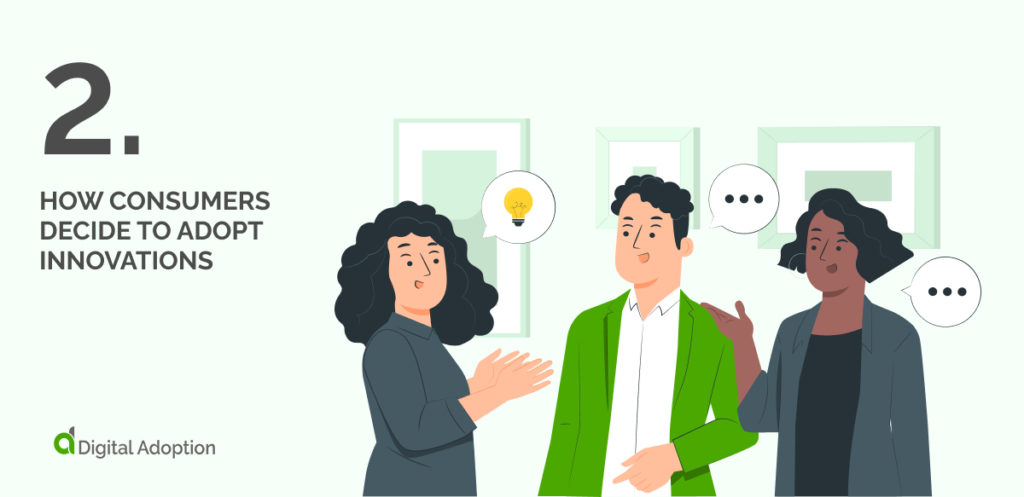
When consumers consider adopting a new product, they weigh several factors. They will look at the cost of switching from their current solution and the perceived value of the latest technology and consider whether this solution is in line with what their peers are doing.
- The social systems and norms that support or block innovation adoption
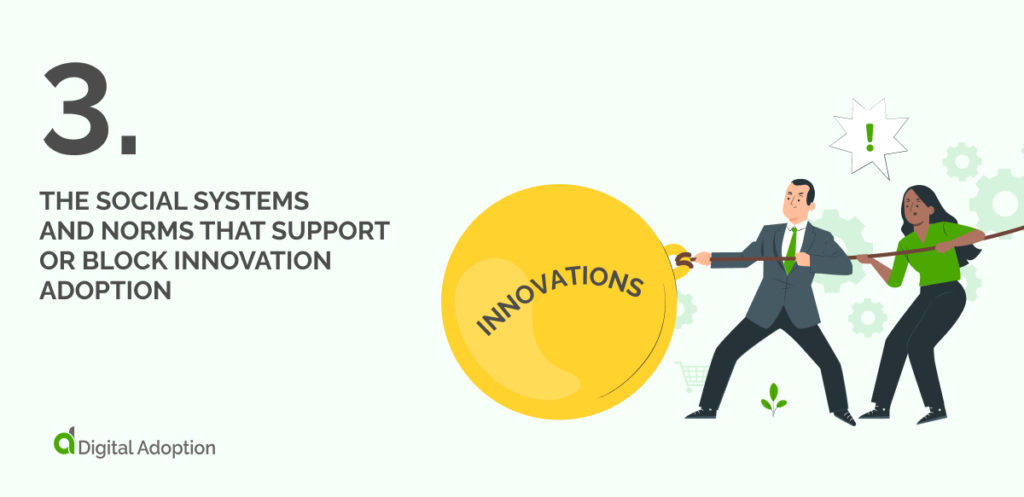
If users perceive an innovative product to be desirable, it has a better chance of being adopted. Likewise, if other people are using it and talking about it positively, this can also help drive adoption. One way to overcome the social norms that block innovation adoption is through wide-ranging education with appropriate training methods, such as lean six sigma. This may involve tutorials, how-to guides, or even just friendly advice.
In today’s connected world, social media platforms like Twitter, Instagram, and TikTok are great opportunities to educate and inform potential customers. When all customer segments have easy access to direct assistance, they can find the confidence to try out a product or service.
- Communication channels
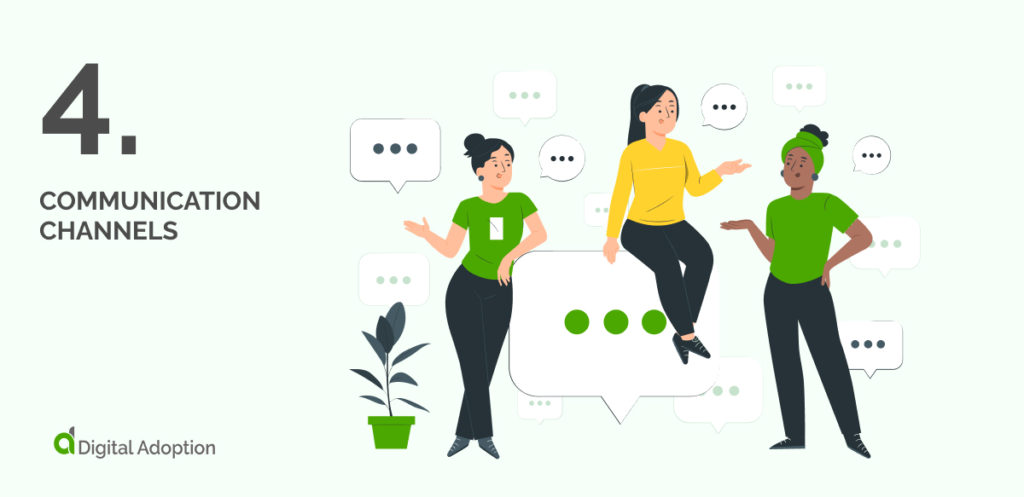
Companies need to be aware of the communication channels they use and how they can leverage them to reach users. This could involve email marketing campaigns, social media advertising, or even word-of-mouth marketing. Companies should also keep track of how consumers receive their message; if it needs to be resonating, they should adjust their approach.
- Promotion efforts
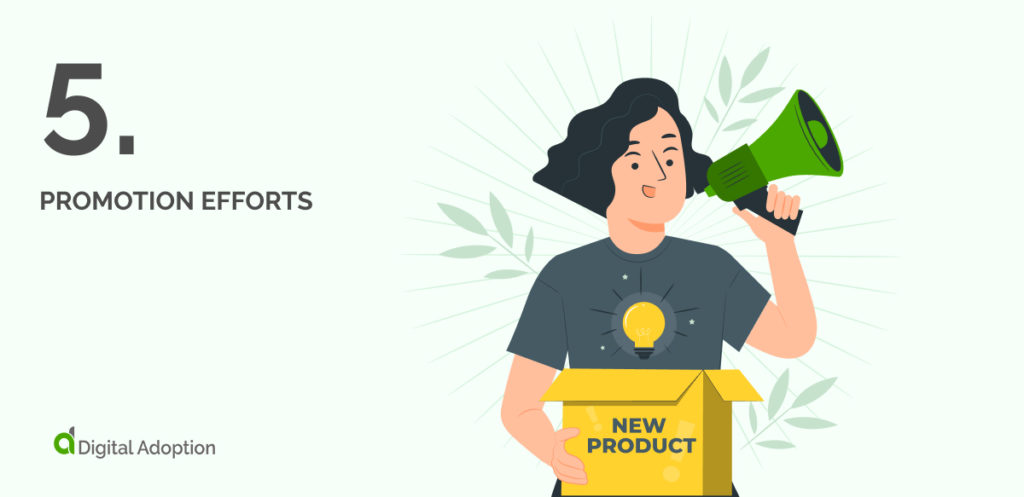
Companies must ensure that their promotion efforts reach all groups within the product adoption cycle. They should create tailored marketing messages for each group and look for opportunities to showcase their product or service.
This could involve setting up demos, running webinars, or participating in trade shows and events. Incentives like discounts, free trials, and referral incentives can give users peace of mind in trying a new product.
Rogers’ Five Subfactors of Product Innovation

One driver, product innovation, needs further explanation.
Rogers explained five subfactors that determine the success of a product or service. These include the product’s advantage, compatibility, complexity, trialability, and observability. Each of these five subfactors plays an essential role in the success of a product or service. It is common sense that a product has an attractive value proposition, is easy to use and understand, and is communicated effectively with potential adopters. Then it stands a greater chance of being adopted.
- The product’s advantage
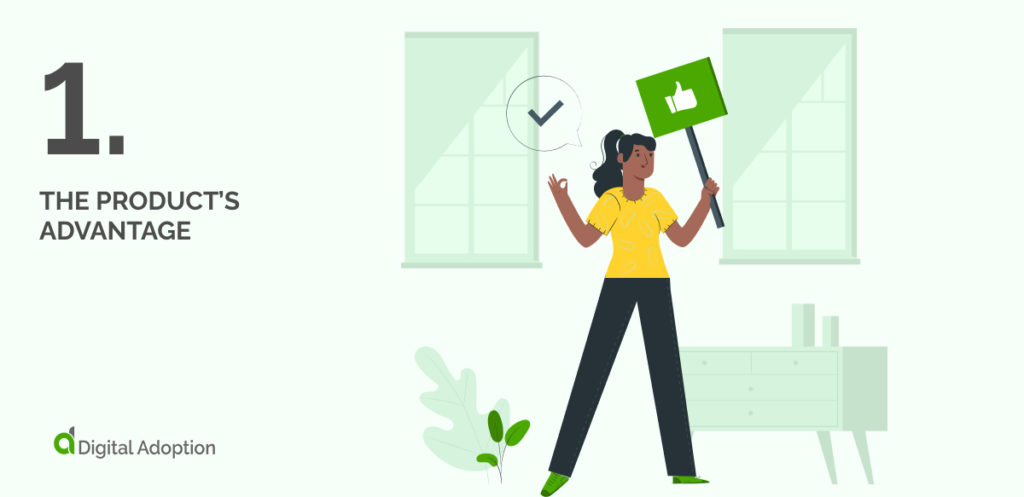
This is the value proposition of a new product or service. A target customer needs to see value in a new product or service for them to adopt. The deal must be communicated clearly and accurately so potential adopters understand why they should switch from their existing solution. The product’s value could come from its design, features, how it works, or competitive price point.
- Product Compatibility
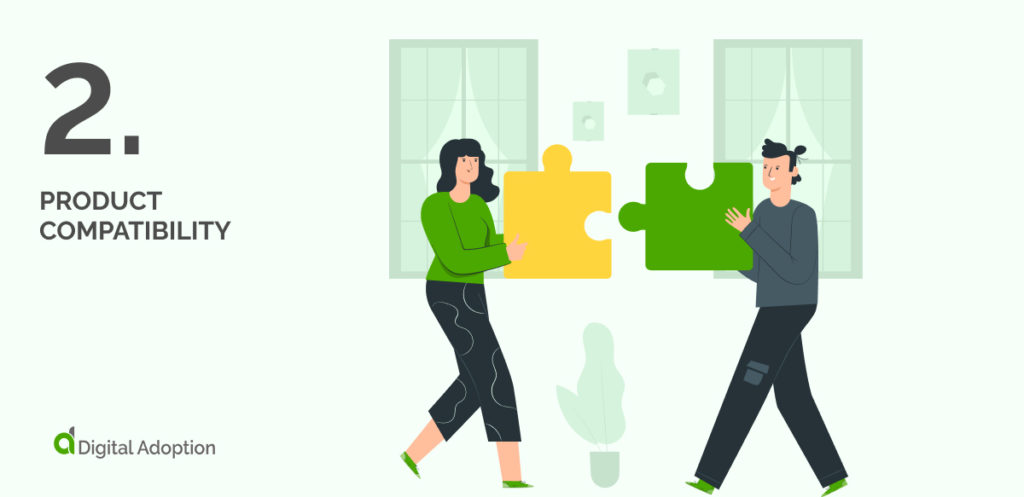
Product compatibility is how well the product fits into the target customer’s life, habits and behavior. Consumers need to feel that this new product or service will integrate easily with the current way. Companies need to understand their target customers and tailor their products to the target customer.
The compatibility will be an especially important subfactor for customers seeking to purchase or subscribe to SaaS products. Software integration failures are simply not an option for businesses running on tight margins. The late majority group will need rock-solid assurance that a new product will work with their existing portfolio of software applications.
- Product Complexity
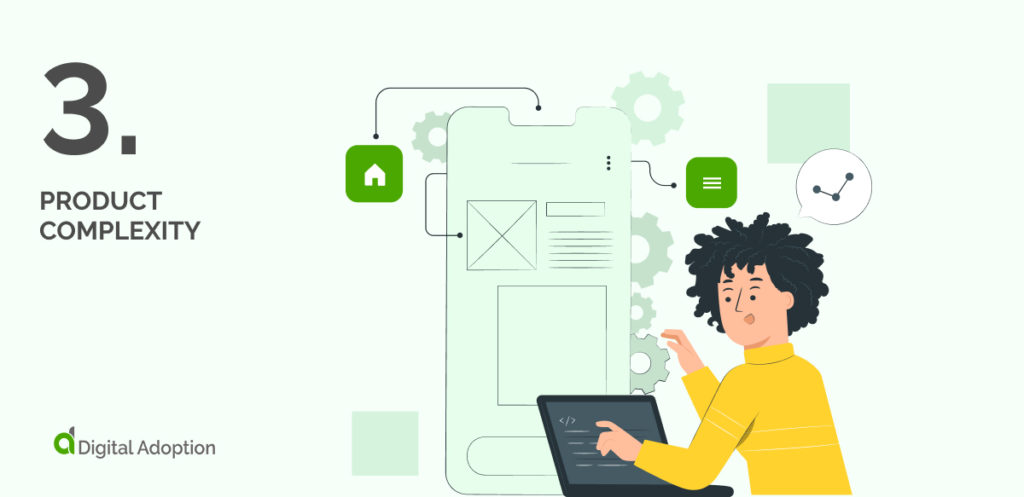
The complexity of a product or service refers to the difficulty required to use it effectively.
Innovators will be able to handle complexity. Their enthusiasm for the concept will help them overcome fundamental technical issues. In later phases, developers must show that it’s easy to implement, usable without excessive training, and accompanied by a large body of support materials.
Each customer segment on the curve will have a different level of tolerance for complexity. Companies must ensure that potential adopters feel they can understand, set up, and use the product without excessive demands.
- Product trialability
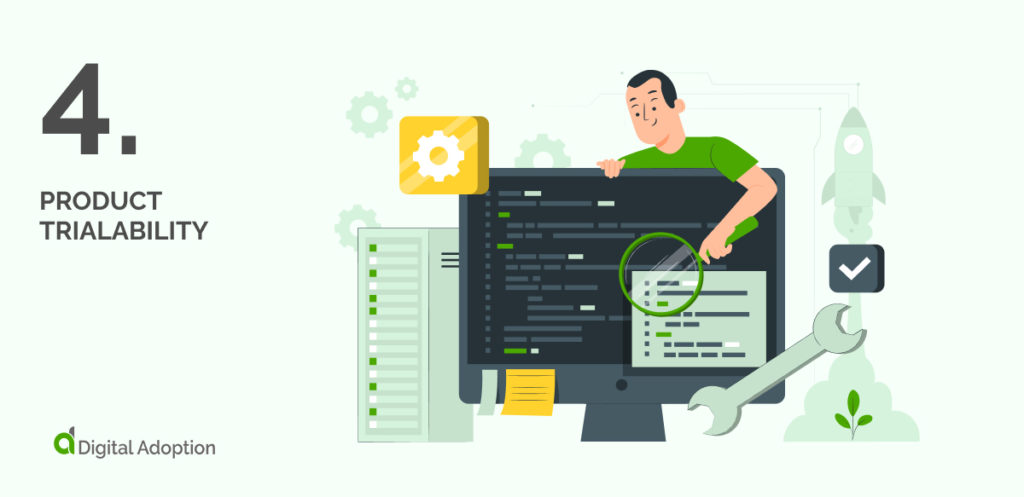
Many consumers will need to experience an innovative product before adoption.
Trying out any product before investing in it helps adopters experience its value without making a significant commitment. But this step is crucial for innovative products, software, and technology, in which the new product may be unfamiliar to the audience.
Accessible trials allow potential adopters to see if the product meets their needs.
- Product observability
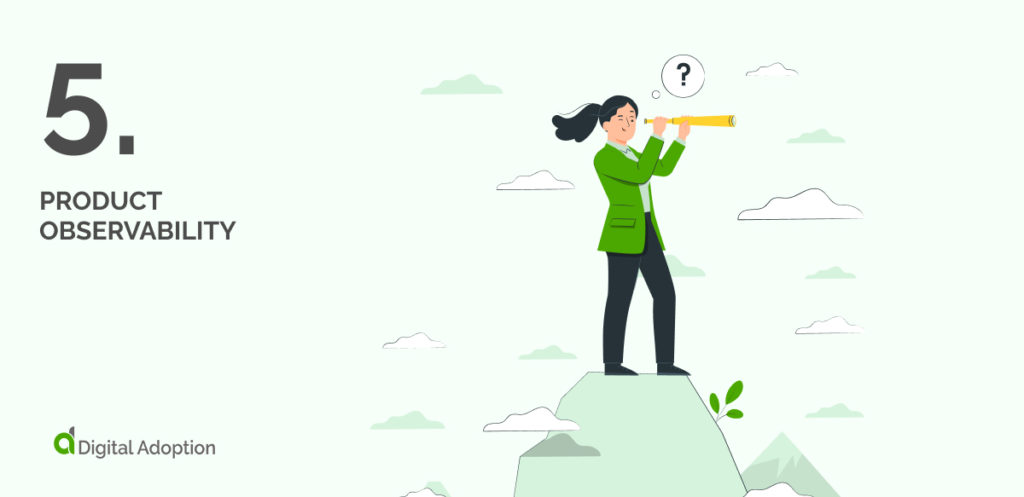
This is the ability of adopters to observe a product being used and its success with other users. Seeing other people using a product or service can be reassuring for potential adopters, as they will keep the outcomes before they try out the product themselves. This can help build confidence in the product or service and encourage adoption.
The consequences of the Product Adoption Curve for Product Marketing
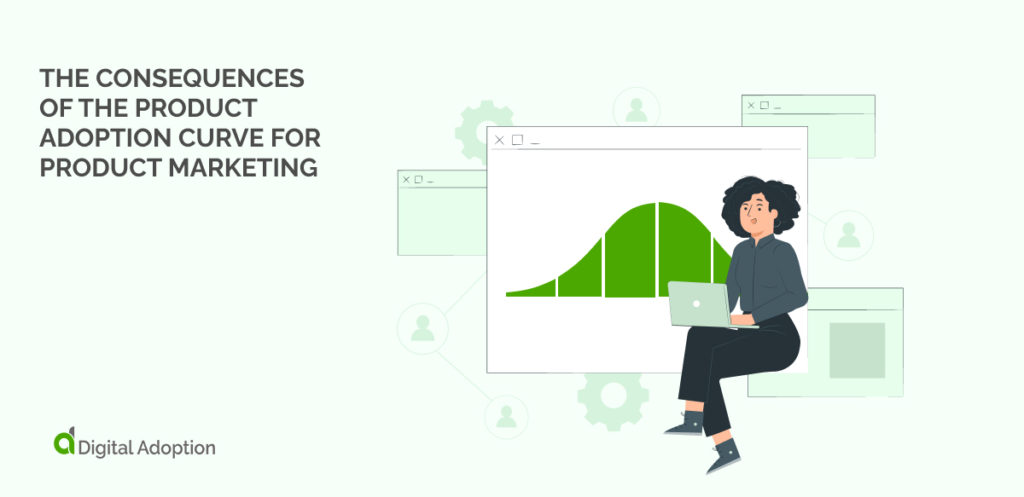
Good marketers will use the product adoption lifecycle to develop their product marketing strategy. Companies must tailor their messages to each group within the adoption cycle, personalizing them to reach different customer segments.
For innovators, companies should focus on showcasing a product’s or service’s cutting-edge features. Early adopters are looking for personalized solutions to their problems, while most adopters need more assurance that the product or service is reliable and cost-effective. Finally, laggards will require clear messaging about a product’s or service’s benefits.
Companies need to ensure potential adopters understand its value. The product adoption lifecycle helps to explain the different messages a company will need to reach every possible customer.
Five Ways to Accelerate Product Adoption
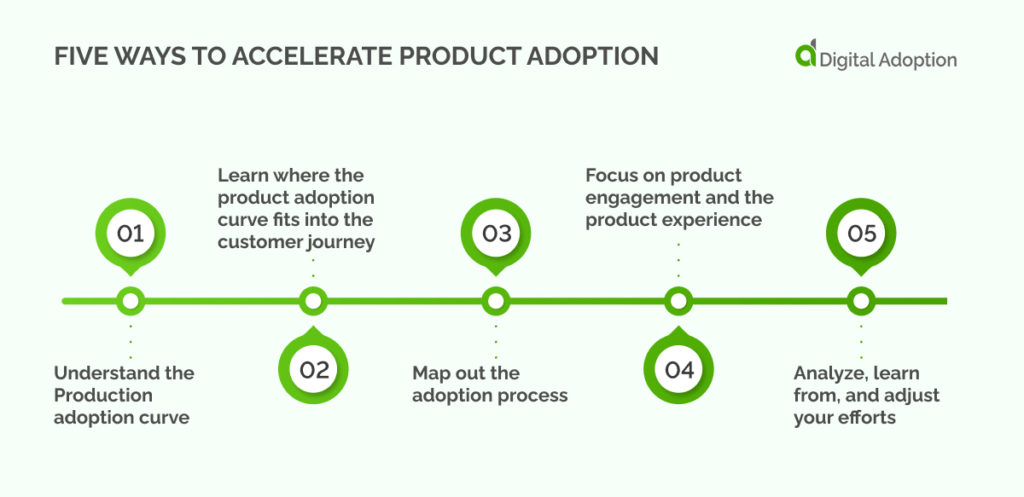
Every product leader should consider the adoption curve before they launch a product. They will want quick approval from the innovators, but they will also need a strategy to continue building up the appeal for other adopters on the curve. With the right approach and execution, attention to the curve can help businesses improve take-up at every stage.
- Understand the Production adoption curve.
The first step to successful product adoption is understanding it. When organizations examine their data, they can see firsthand how product adoption works.
- Learn where the product adoption curve fits into the customer journey.
Businesses can gain deeper insights into their end users’ hearts, minds, and mindsets. That information can be used to improve product adoption efforts. Business units can coordinate with one another to gain more insights, streamline the customer experience, and make other improvements. Other areas include pre-adoption communications, “Unseen” business functions that impact product adoption efficiencies, such as IT, billing, or additional back office functions, and customer communication, through customer service and marketing. Understanding how these areas work together can help organizations get better results from their adoption programs.
- Map out the adoption process.
The next step to improving product adoption is mapping it out, using customer journey maps, project schedules, and roadmaps for product adoption. Doing this helps to translate theory into reality, set recordable goals, and find insights to inform decisions and improve product adoption. In short, a roadmap or journey map helps businesses understand adoption in their own business – and, more importantly, improve it over time.
- Focus on product engagement and the product experience
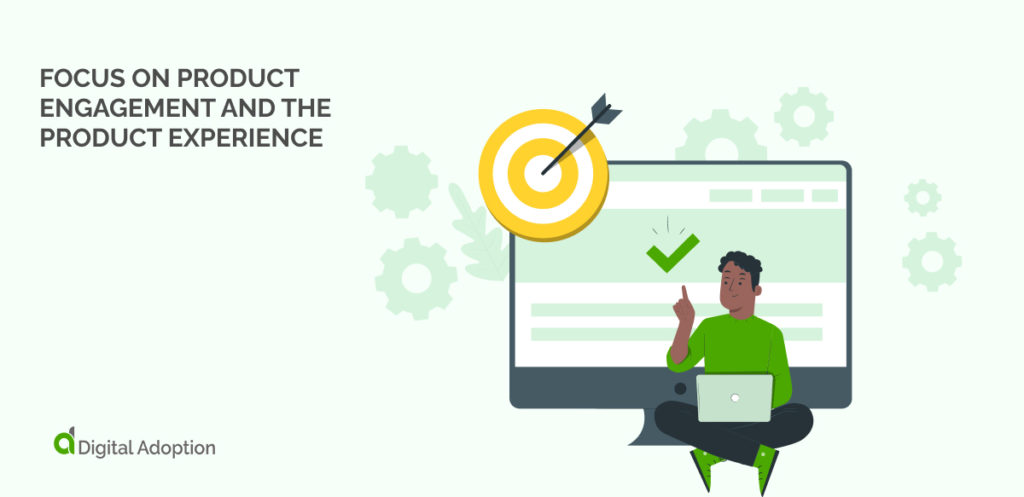
The most impactful ways of improving production adoption directly involve the end user. Onboarding, training, and ongoing support all ensure that individual customers can adopt the product. In turn, the developer can quickly adjust to the effect that improves usability, utility, and other areas that affect the end user’s experience. The better a user’s experience, the more engaged, proficient, and productive they will be.
- Analyze, learn from, and adjust your efforts
Implementing continual improvement processes is critical for product adoption. Companies must audit current efforts, observe the outcomes, and adjust their approach and messaging accordingly. A constant feedback loop helps businesses hone in on what works and what doesn’t so that they can optimize their product adoption efforts over time.
Three Product Adoption Strategies For Developers
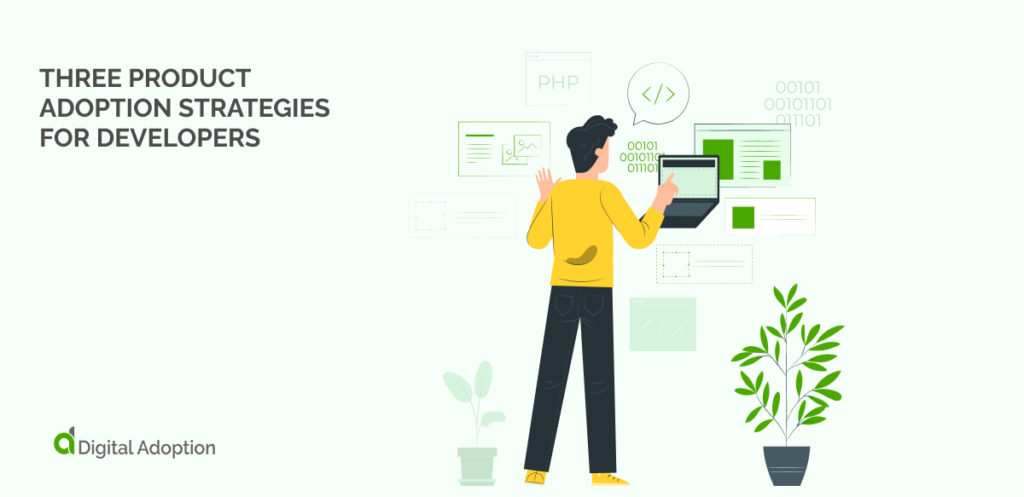
Product development companies must be aware of the product adoption lifecycle and have strategies for each group. By understanding the customer journey and individual buyer personas, businesses can create better products with more explicit messaging for their target audience.
As Your Product Ages, Change Your Marketing
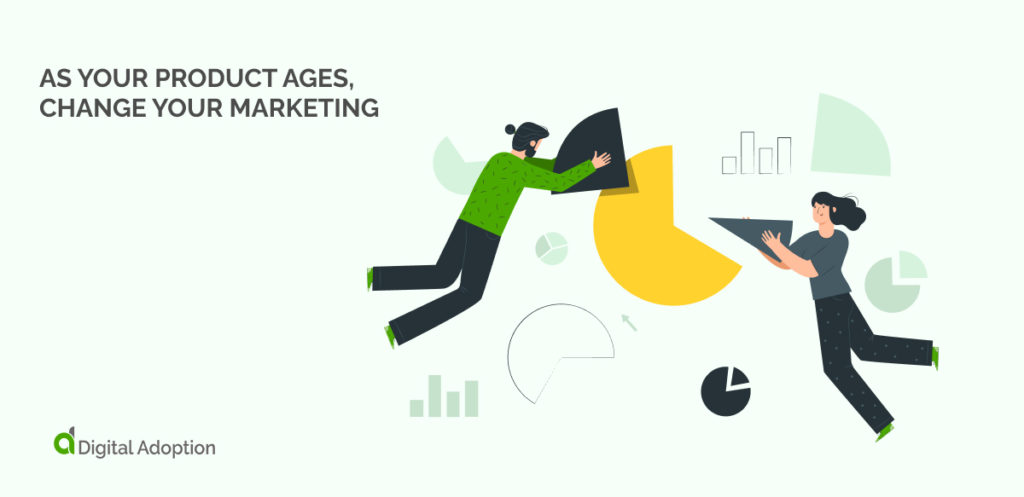
Developers should review how they are marketing their products as it ages. Marketers must carefully find the right message to reach those potential adopters. The personalized solutions that early adopters need are very different from the assurances about reliability that most adopters look for. Get it wrong, and developers will miss out on sales.
Establish How to Cross the Chasm
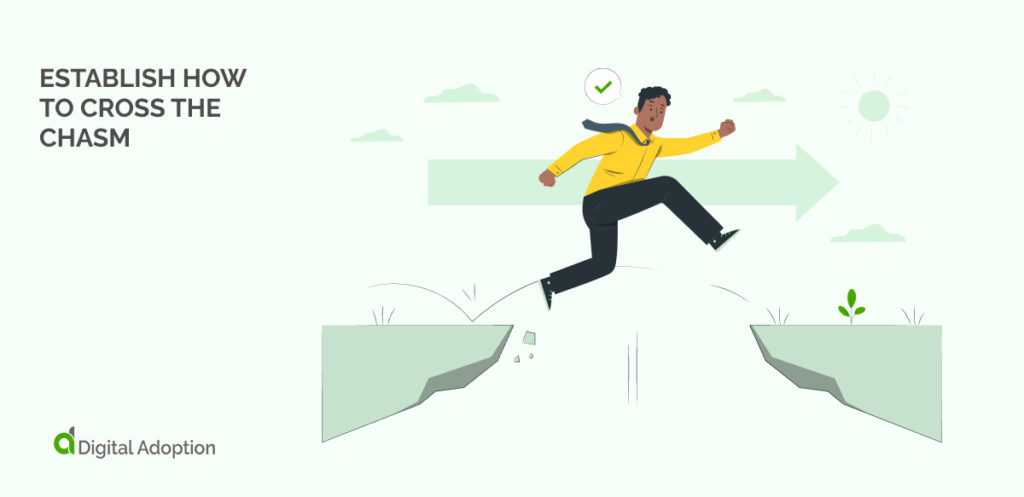
Once early adopters take on the solution, the product may make the developers money. However, the story does not finish there. “Crossing the chasm” is when a product goes from niche appeal for innovators and early adopters to mainstream adoption. Users will have increased expectations at this stage, with less forgiveness for mistakes.
So, developers need to ensure that the product works as expected and that they can support it appropriately. But they also need to ensure that it gives much more value for money, offering solutions to various needs.
Crossing the chasm may be the difference between a digital product reliably covering its costs and creating consistent profit in the years to come. Developers need to ensure their products and their messaging are doing the work.
Don’t Neglect The Laggards
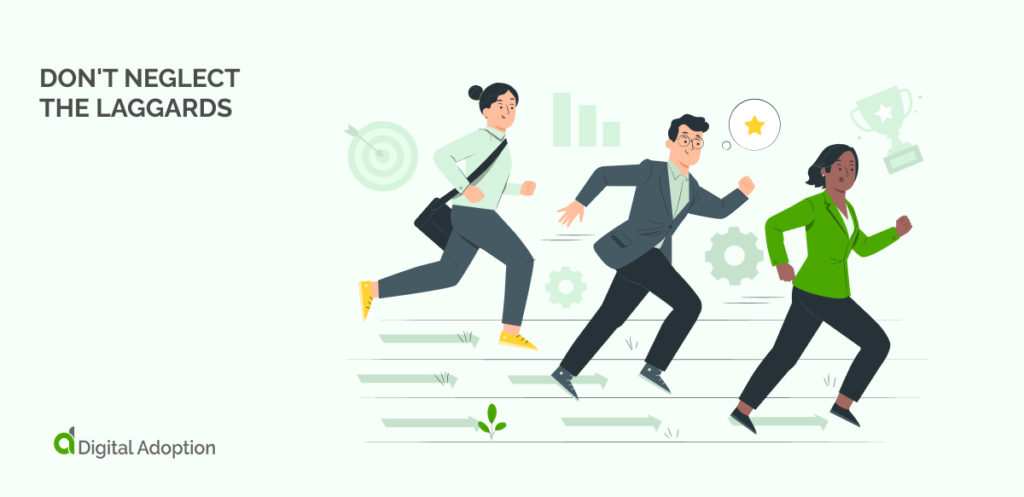
The adoption rate will inevitably slow down at the end of a productive lifestyle. However, the laggards remain a key target group to achieve success in digital production adoption.
Laggards often have objections to adopting a product. Therefore, marketers should consider all those barriers to adoption as their focus. It is worth spending a tough time speaking with potential adopters to understand their barriers.
Objections may include cost, compatibility, and existing product loyalty, but a company will only know if it interacts with its target audience.
Regarding laggards, the marketing team may be more active than the development team. Laggards may be the most challenging of the adopter groups to win over, but they can be critical to long-term growth.
How To Increase Product Adoption of SaaS Products at Every Stage of the Product Adoption Lifestyle

Trying to educate users, listen to feedback, and tweak a product’s design can significantly improve the SaaS adoption curve at every stage.
SaaS solutions have many advantages for clients at all stages of the product adoption curve. With manageable implementations and reasonable costs, there are few barriers for innovators and early adopters to get on board with new technology. SaaS products today offer many ways to support the digitization of existing processes, and clients can quickly see how a digital service can help their company’s growth.
But on the other hand, the SaaS model may still present concerns for different groups on the product adoption curve. Worries about overspending and data security, the early and late majority groups may all feel cautious about signing up for the risks of a new product and the laggards.
- Innovators
The innovators may be a tiny group of users for a completely new SaaS product. Their enthusiasm and commitment to development may make the company less profitable in the long term. However, developers should listen attentively to them. By nurturing a relationship with the most engaged people, the SaaS company can start a loyal customer base that will help with every other stage.
Make it easy for them to get started with the product using price reductions or other incentives. Once innovators have started using the product, let them have detailed conversations with staff whenever technical issues arise. If an innovator asks for new features, take their suggestion seriously, and let them know when you have made a decision.
- Early Adopters
Early adopters of a new SaaS provision have some characteristics in common with innovators. They are still taking a risk by using the software, which will provide valuable insights into the solution’s effectiveness. However, SaaS businesses must do more to earn their trust and faith. Case studies, testimonials, and extensive support materials will give potential early adopters the confidence they need to try new software.
For innovators and early adopters, SaaS companies should find a way to measure product engagement effectively. This may give unexpected insights into the way each individual uses the application.
- Early Majority
The early majority are more pragmatic and sensible than innovators and early adopters. They will look for productivity solutions that integrate seamlessly into existing workflows, solve real problems, and offer tangible benefits. They may have less tolerance for emerging technologies, so SaaS businesses must present an attractive proposition to these users to earn their trust.
The early majority is an important customer segment to attract, as they will be the first users to raise profitability to a sustainable level.
- Late Majority
The late majority may still need to be convinced about the risks of using a new SaaS solution. They will need to be confident of the total value of the software before they jump on board. Development teams and marketers must work together to show that the risks of the product are minimal and that the benefits far outweigh any dangers.
The late majority are less likely to provide a continual feedback loop. But by this point on the adoption curve, a good SaaS business will resolve many problems at the early stages of the adoption curve.
- Laggards
The laggards will always be the most challenging group to convince. They will be hesitant about any new technology, and marketing teams must make a concerted effort to reach out to this demographic, making them aware of the technical advantages offered by this product solution. By this point in the adoption cycle, the developing company should be able to provide a lot of social proof. Real-life testimonials can go a long way to convince the cynical laggards.
Master the Product Adoption Curve for Long-term Growth
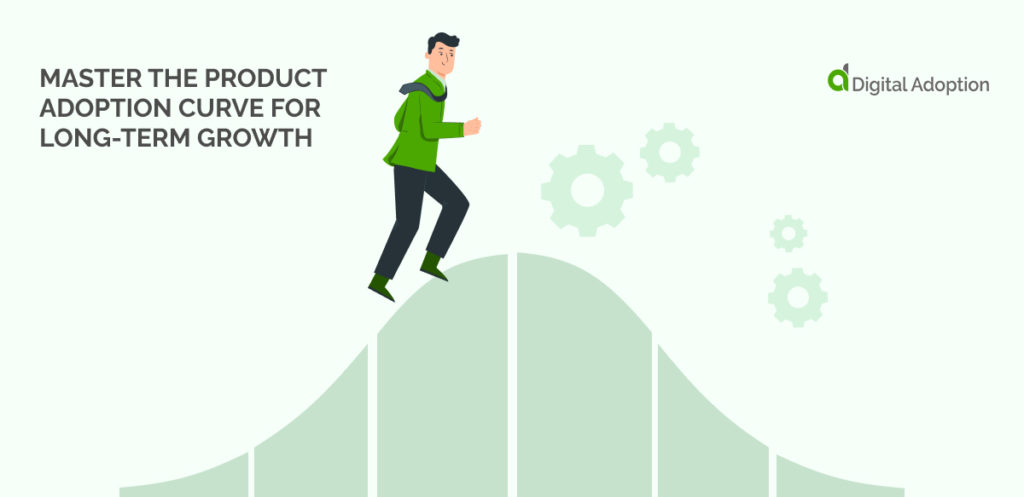
Companies that do well with production adoption are setting themselves up for success later.
For example, it’s not enough for customers to start using a service. They need to keep coming back. But as a 2021 Gartner report advised, strategies for adoption and retention are very similar, “developing a focus on programs that educate clients and build relationships with potential customer advocates.” Improving training materials at the start helps everyone.
Furthermore, a water-tight knowledge base will support a company “Crossing the chasm” from early adopters into the early and late majorities. But that base of experience and wisdom can go on to serve as a brilliant resource for customer services, thereby improving the overall customer experience of the product.
The production adoption curve needs to give a template for success. But by drawing attention to the variety of customer journeys, the product adoption curve leads businesses to success.













